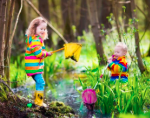Introducing young children to the natural world is a joyful and enriching part of early learning. Preschoolers are naturally curious, and the outdoors offers endless opportunities to spark their imagination and nurture a love for the environment. By guiding them gently and thoughtfully, educators and caregivers can help children develop a meaningful connection to nature.
Why Nature Matters in Early Childhood
Nature supports children’s physical, emotional, and cognitive growth. From climbing over rocks to watching butterflies flutter by, outdoor experiences encourage movement, observation, and reflection. Time spent in nature can also foster empathy, responsibility, and mindfulness—traits that serve children well as they grow.
Simple Ways to Explore Nature with Preschoolers
1. Nature Walks with a Purpose
Taking short walks in parks or schoolyards gives children a chance to notice trees, insects, birds, and weather. Encourage them to use their senses: What do they see, hear, or feel? Asking open-ended questions helps them think critically and express what they discover.
2. Creating Nature Journals
Provide each child with a small notebook to draw what they observe outdoors. These journals can include leaves, feathers, or bark rubbings. Over time, the journals become a record of seasonal changes and personal discoveries.
3. Exploring the School Garden
Even a small garden can be a powerful learning space. Children can help plant seeds, water plants, and watch flowers bloom. This hands-on care teaches patience and appreciation for living things.
4. Bringing the Outdoors Inside
On rainy days, educators can bring natural items indoors for exploration—like pinecones, smooth stones, or flower petals. Setting up a sensory table or discovery corner keeps the curiosity alive even when children are inside.
Encouraging Respect for Nature
Use gentle language to help children understand how their actions affect the natural world. Simple ideas like not picking all the flowers, staying on trails, and being kind to animals are easy for preschoolers to grasp. Storybooks, songs, and group conversations can reinforce these values in a calm and positive way.
Supporting Curiosity with Books and Art
Books about animals, weather, plants, and habitats are excellent tools for sparking interest. Encourage children to create drawings, paintings, or sculptures based on what they see in nature. Art helps them express their connection to the environment in a personal and imaginative way.
Final Thoughts
Teaching preschoolers about the natural world isn’t about memorizing facts—it’s about helping them notice, wonder, and care. With thoughtful guidance, young children can begin a lifelong relationship with the earth that’s rooted in respect, curiosity, and joy.


